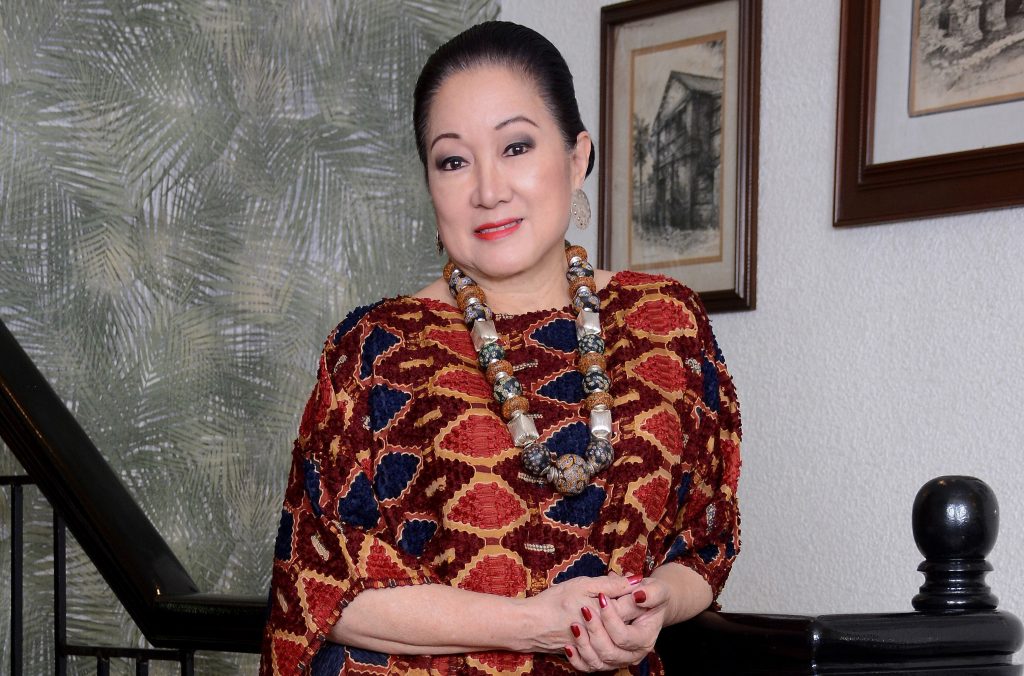The inspiring women on our #RadarList often play a myriad of empowering roles and Nikki Coseteng is a great example of this. After 9 years of being a senator in the Philippines, she turned to kaftan design.
With the skills she gained from designing ready-to-wear kaftans for her friends during the lockdown, Nikki launched her own brand, “Kaftan One by Nikki Coseteng,” a luxury loungewear/resort wear line.
Her political background and ardent love for Philippine textiles have birthed a kaftan collection that will shepherd you through the rich textile heritage of the Philippines.
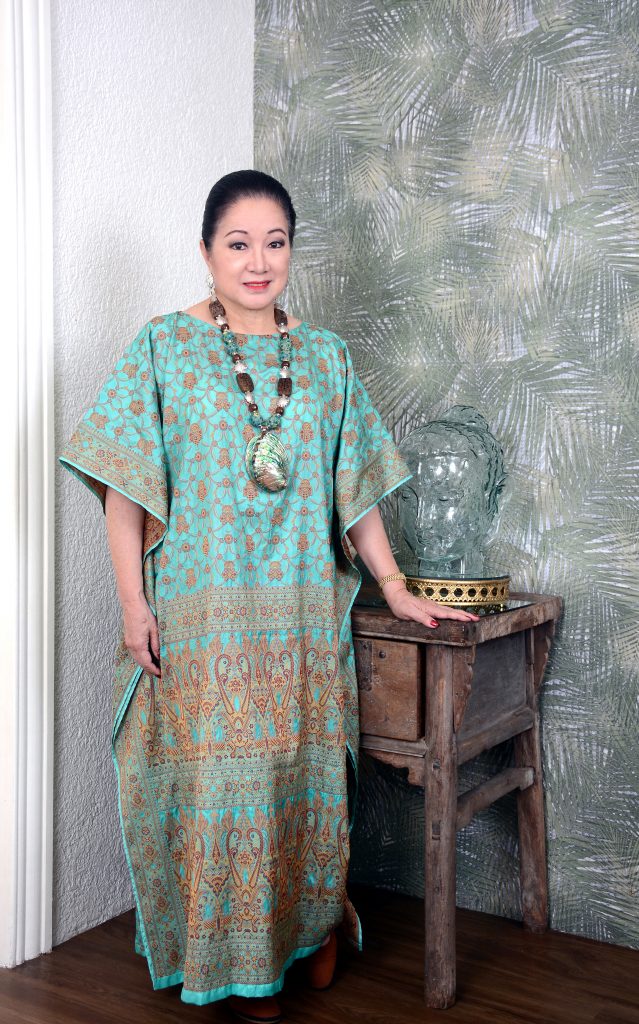
Bringing indigenous Philippine textiles into the limelight, Kaftan One by Nikki Coseteng is a wearable tale told through handmade and naturally-dyed fabrics, which Nikki has sourced herself from the regions of Cordillera, Ilocos, Abra, the Yakans of Basilan and the Taosugs of Sulu.
For her design aesthetics, Nikki has also drawn inspiration from her travels, indigenous tribes, local weavers and artisans from countries she has visited. So in her collection, you can expect to find exquisite silk and cotton from places, like Thailand, Sri Lanka, Vietnam, Malaysia, India, Korea and South Africa.
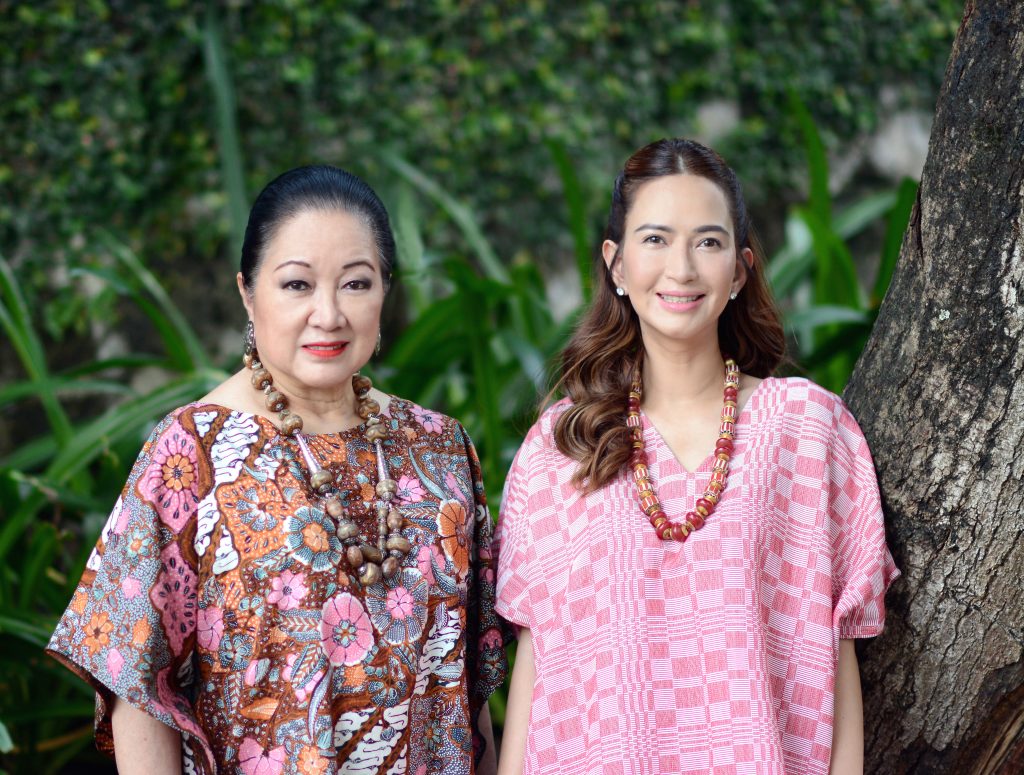
All things considered, her kaftan line is a beautifully-woven narrative of her life as a local textile advocate and an avid traveller who unearths underappreciated textile cultures from around the world.
We got a chance to interview Nikki Coseteng to talk about the story of Kaftan One by Nikki Coseteng. In case you’re wondering where to shop her collection, Kaftan One is now available at Rustan’s Makati and Shangri-la Plaza in Ortigas, Philippines. In the meantime, check out the brand’s Instagram page here:
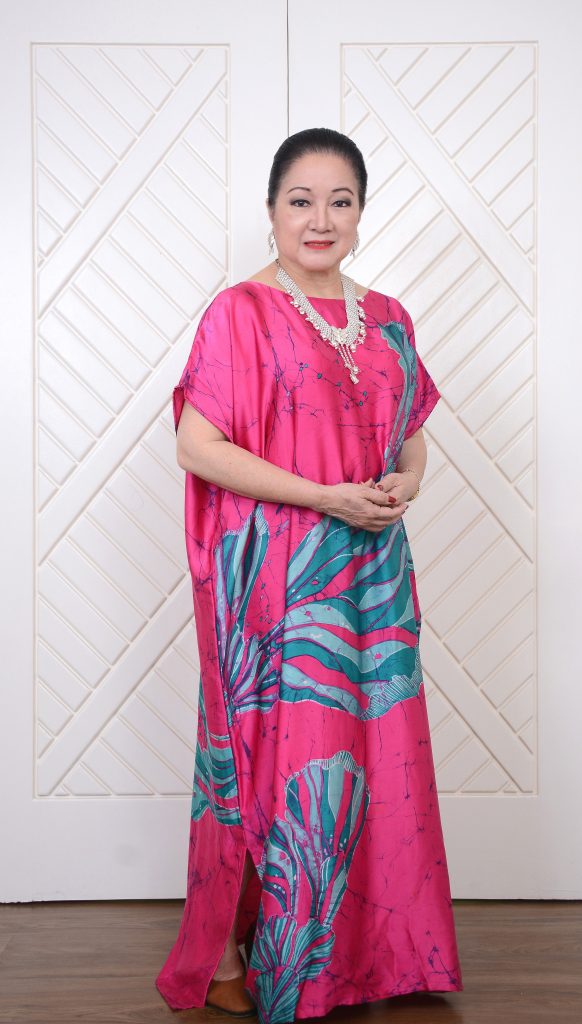
1. How would you describe “Kaftan One by Nikki Coseteng” to someone who first learned about the brand?
Kaftan One is mostly one-of-a-kind, artisanal, hand-produced fabrics turned into comfortable, elegant Kaftans to fit all sizes, personalities and usage. Our Kaftans are individually cut and sewn by seamstresses in their local communities. The fabrics are sourced from different countries and they are mostly hand-woven, hand-printed and naturally dyed. They are created individually by artisans from top-grade cotton, silk, linen, viscose and other blends.
2. Was there a specific moment that ignited you to build this brand?
After having collected fabrics for over 5 decades from all over the world during my travels, I came to a decision to turn them into wearables during the lockdown due to the Covid-19 pandemic. I moved from a large home to a 3-bedroom condominium unit and so storage was definitely a challenge. At first, it was just for my own use. Then as there seemed to be acceptance and appreciation from family and friends, I decided to try making more pieces. I mustered enough courage and offered them to a friend, Nedy Tantoco, the owner of Rustan’s, a prestigious department store carrying beautiful and fashionable local, as well as international designer brands. She gladly accepted the Kaftans and provided support and a prominent display area in her stores in Makati and in the Shangri-la mall, and the rest is history. Ms. Tantoco was very supportive and encouraging. So, for a neophyte, it meant the world to me. And her staff also made me feel that it was worth it for them to give me the space in Rustan’s. That was very encouraging and uplifting.
3. What are the stories/messages you aim to tell through each Kaftan?
Every Kaftan goes through quality control and inspection. What I will not wear, I will not sell. Most of them that are hand-crafted carry imperfections, but they are not defects; they are unique and that makes each piece special. Kaftans are extremely comfortable and elegant. They are versatile and acceptable wear for all occasions and venues. There’s always the right one for every occasion and personality. Kaftans cool the body, unlike tight-fitting outfits and I find them the most suitable in tropical weather. They for me an excellent, 100% reliable and creative way to camouflage unwanted body folds. Kaftans can also be worn by both women and men. Although I haven’t started the men’s line, that’s the next part of my plan. They look great in all sizes and proportions.
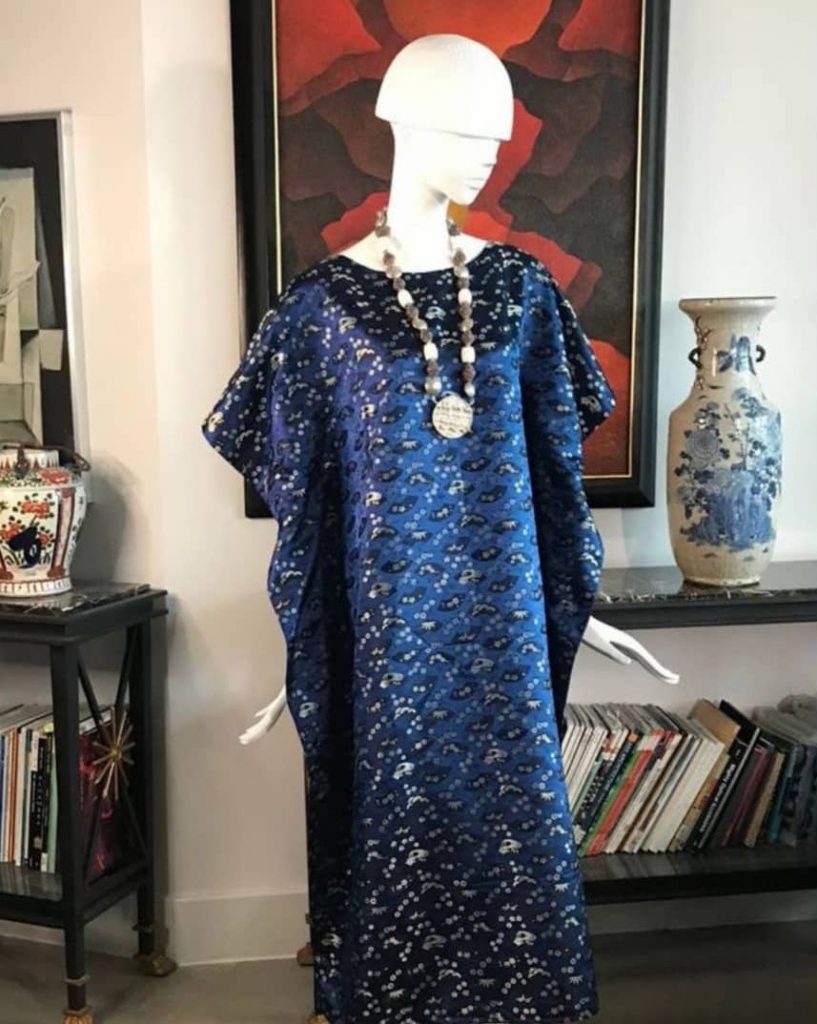
4. Each Kaftan is inspired by your travel. Can you tell us a little bit about this creative process?
Travel is a great eye-opener. Whether off the beaten track, in far-flung villages, in posh shopping malls, in craft stores, or at night markets, fabrics that are worth collecting always attract my attention. The price is not important to me. What matters are the designs, patterns, colour combinations, the amount of time it takes to create, uniqueness and just the overall impact each fabric has on me.
Fabrics are very heavy. So, in addition to the cost and other expenses that go into sourcing and shipping, there’s the physical effort of carrying them from the source to the hotel. I am not always fortunate to have others with me who can help carry heavy bags. I was never buying for commercial production and I never realized the actual cost of each fabric should really include all of that. I was really just buying what I like and what made me feel good.
The cost of fabrics over the years, I must say, has increased far more than the increase in the price of gold. Collections of fabrics have also increased in numbers and many are willing to pay the price for rare pieces.
Also, the women weavers and producers from the 70s to the 80s are either no longer able to perform the tasks or have passed away. And the children are not always willing to keep the craft alive, considering alternative options that are available to them in IT and other fields.
As for the creative process, Kaftans are very simple garments. I do not believe in over-decorating them. The fabrics are precious as they are. For me, simplicity speaks a thousand words. It is also easier to accessorize simple garments and turn them into stunning outfits. I am also thinking of offering the neckpieces I have produced over the last 50 years too. They look really stunning when worn together with my Kaftans. They will also be available in Rustan’s.
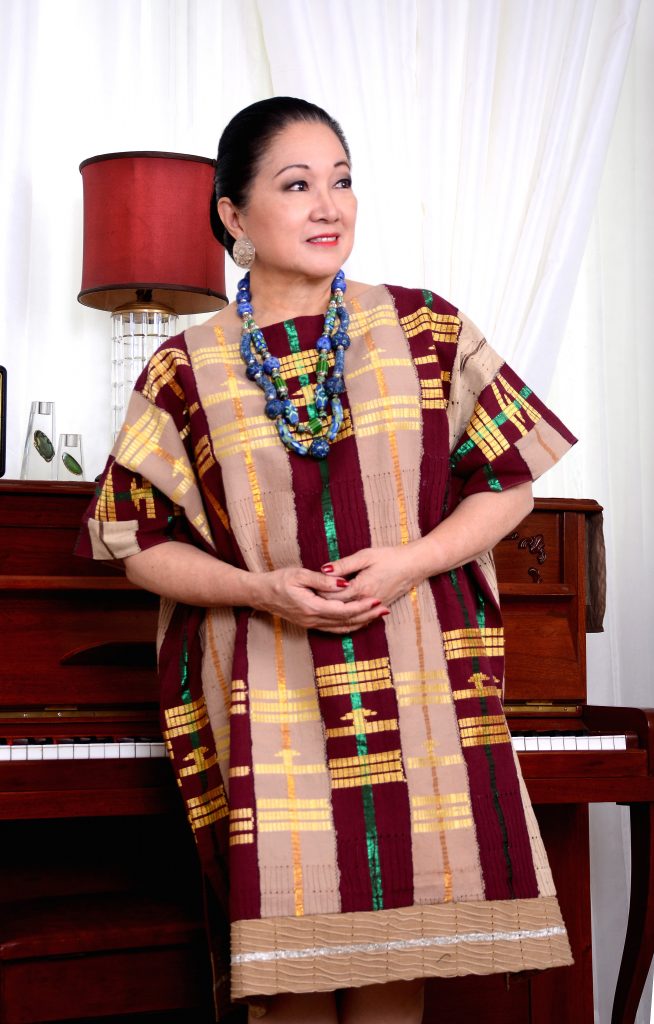
5. Are there any similarities between your former role as a Senator and a now Kaftan designer?
The role of a Senator versus a Kaftan designer, they are quite different. However, the more different these roles are, the more they seem to yield similarities, and those are:
- Focus and concentration
- Appreciation and acceptance by the clients/those for whom the products are created for
- Attention to detail, quality and uniqueness
- Endless hours of work don’t seem like work at all
- Striving for excellence
- Engagement of the talent to complete the tasks
- The ability to see the value of those who source, introduce and make accessible materials to create quality products
- As a bead and fabric collector, it is important to have an eye to spot what will eventually be put together as an art piece. You really don’t buy them all in one go! Most of the time, years and decades will pass before I can perfect one entire piece.
- Memory is always at work. You must remember what you have. So when a piece or pieces surface, you automatically know whether you need to acquire them or just ignore what comes your way.
- Spot the right people with extraordinary talents to string the beads together.
6. Three words to describe Kaftan One.
Comfortable, Exquisite, and Creative
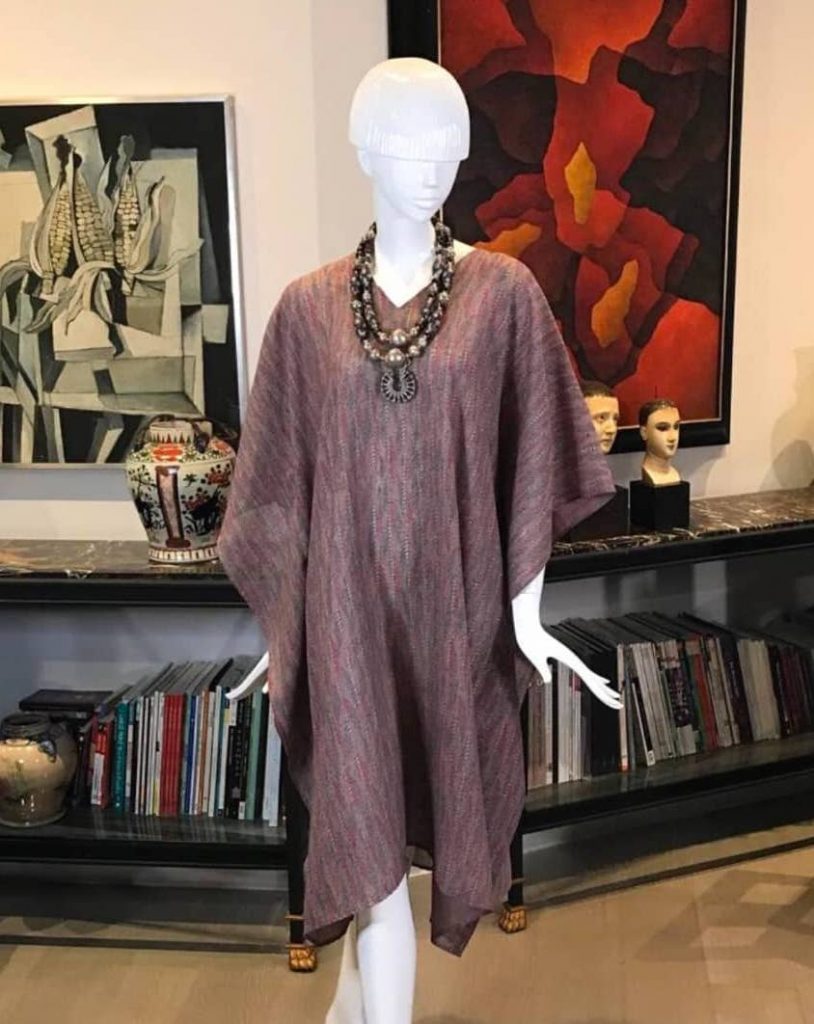
7. As a designer, what do you see as the future of fashion and how would you like to move the fashion industry forward with your brand?
I hope more ladies will want to wear quality, unique and elegant Kaftans. They give the wearer freedom of movement. They also take very little time to put on. For me, 5-10 seconds is more than enough to wear a Kaftan. Casual or formal, it’s the same. I hope Kaftan One has helped in giving women a choice to be free. To be able to make a statement of their own. To be elegant in simplicity. To dress for themselves rather than for others. To be what they feel rather than what is expected of them. I hope more women look to buy clothes to last a long, long time rather than go for disposable clothing. It’s also good for the environment too! I would like to see women contributing to keeping arts and culture alive. Every Kaftan I wear is a masterpiece. Some pieces take as long as 6 months to a year to complete. That’s a labour of love, pride and respect that go into creating each piece.
8. Any advice for aspiring young designers?
You have a great responsibility not just to follow in the footsteps of the masters who preceded them, but to create and innovate from where they left off. You have to take the art seriously, and be innovative rather than copying because it’s an easier way out.
Young designers of today also have the technology to aid them in research, investigation and innovation. This was not accessible to the older masters. So, they did everything the harder way with no shortcuts. That’s how iconic designers came about. That’s how masterpieces are made. The difference between ordinary and extraordinary is the EXTRA work that goes into it.
(All images above courtesy of Nikki Coseteng/Kaftan One by Nikki Coseteng)
